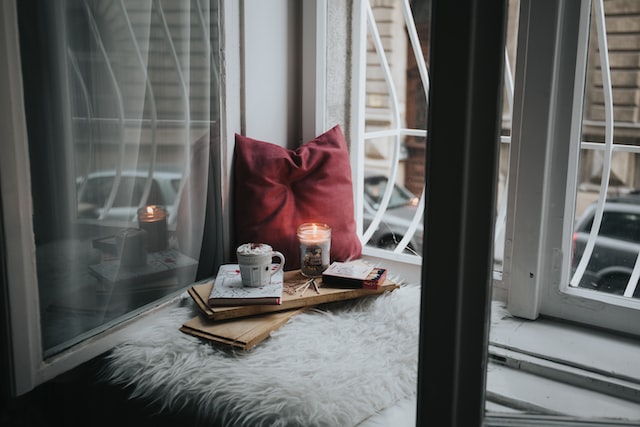The cost-of-living crisis has hit people hard. There has been a lot of turmoil and anxiety surrounding energy bills this winter, with a lot of people concerned about how they are going to pay them. This year, perhaps more than ever before, you need to find ways to prevent heat loss to keep your home comfortable this winter. There are a number of methods that you can employ to winterproof your home. They do vary in expense depending on how much you have to invest in these methods, although they can save you money in the long run. So, let’s get into it.
Ventilation
Although the weather outside is colder, it’s still important to open your windows for short periods to ventilate the space. Keeping your home relatively clear with room to move around is important for ventilation too. In cluttered spaces, damp can become a problem because things are too packed in and air can’t circulate properly. Too much stuff also makes it more difficult to clean so dust and bacteria can hang around and contribute to poor ventilation.
Pipe Insulation
Most of the time, newer builds will already come with insulated pipes as a standard. However, a lot of older properties need to have these retrofitted. This is because obviously, when they were built, it wasn’t really a thing. Insulating pipes is pretty straightforward and can often be done as a DIY project. Insulating your pipes can help to prevent the pipes from freezing and springing a leak. Although if you suspect a leak, reach out to a professional – like Miracle Leak Detection – to avoid further damage or issues.
In addition to ensuring that your pipes are insulated, you might want to insulate your hot water cylinder too. Of course, not every home has a hot water cylinder. So this doesn’t apply to everyone. Luckily, you can get a hot water cylinder jacket fairly cheaply. Try to opt for materials that are thicker than 80mm for maximum effect. Insulating your pipes and hot water cylinder can also save you money on your energy bills.
Draught Proofing
If you live in an older property, you might notice that during the winter months, it feels especially draughty. In order to winterproof your property, you really need to address these draughts, and there are several options for you. Investing in draft excluders can help, although if you have the money and the inclination, you can have your doors and windows refitted. This is probably the better option for those who live in a property with single glazing. There are also a few DIYs for you to explore too.
The Radiators
There are a few things that you can do to make the most of the heat that your radiator is throwing out. Firstly, you might want to consider the layout of your rooms. Ideally, the space in front of the radiator will be clear to allow for maximum airflow. This may not always be possible in smaller homes, but wherever possible, try to avoid having furniture up against your radiators or within a foot of them.
Next, you might also want to consider fitting reflector panels behind your radiators to avoid losing heat through external walls. As the name suggests, reflector panels reflect the heat back into the room and can be especially beneficial to those living in houses with subpar insulation. As mentioned above, they should only be put behind radiators that are on external walls.
Proper Insulation
Again, this is not usually a concern in newer builds, but older builds may not have the proper insulation. Ensuring that your home is properly insulated can make the biggest difference to your home during the winter months. Most homes built after 1920 will have a cavity, and filling this cavity with insulation can save a lot of energy. Most of the time, it is on the pricier side, especially when done properly, but the savings do mount up over the years.
Otherwise, solid wall properties can also be insulated, and this, too, is often incredibly effective in cutting your heating bills. If you are considering this job, but you are concerned about the cost, then you could do it on a room-by-room basis, choosing to insulate the rooms where your family spends the most time before slowly working your way through the property as and when you can afford it.
Whilst on the topic of insulation, it isn’t simply the walls that you need to think about. While you are at it, you may as well insulate the loft too. Now, most homes in Britain will already have some form of loft insulation, but it’s usually on the thinner side and installing thicker insulation can help to keep your home warmer. This is because, typically, heat rises, and without the right insulation, you might be losing a significant amount of heat through your loft.
Lastly, you may also want to check the level of insulation on the ground floor. Usually, you will only need to reinsulate the ground floor as opposed to the upper floors of your property. While it isn’t a significant saving, insulating your floors can save you money and also help to keep your home warmer too.
The Bottom Line
Truthfully, winterproofing your home can be an expensive process, although, of course, there are cheaper alternatives. However, while it does cost money, it also saves you money in the long run too. In addition to saving you money on your energy bills, it can also help to make sure that your family is comfortable during the colder weather too. Obviously, you do not need to do everything at once; you can think about which areas you want to prioritise and get the work done slowly when you can afford it.

